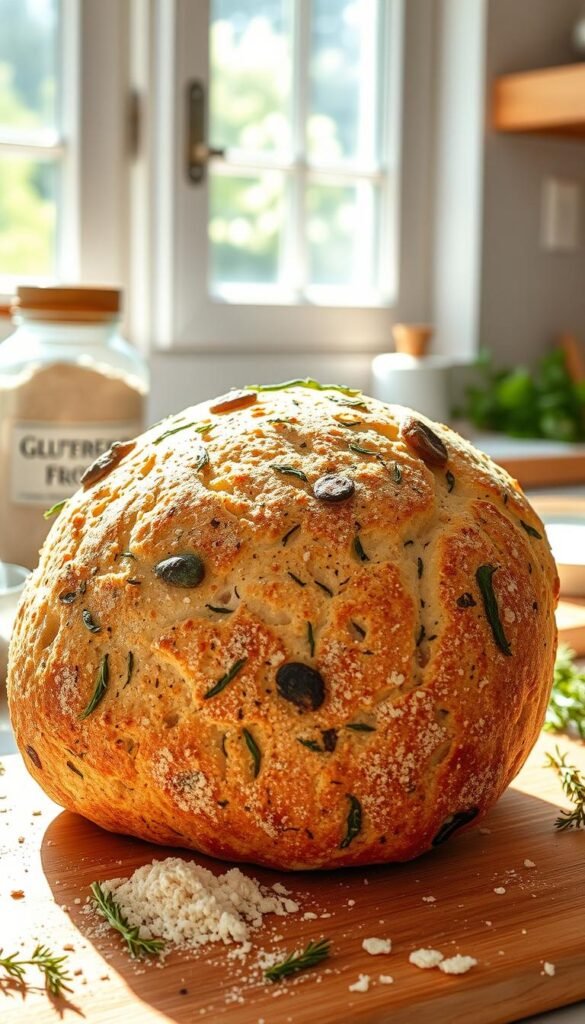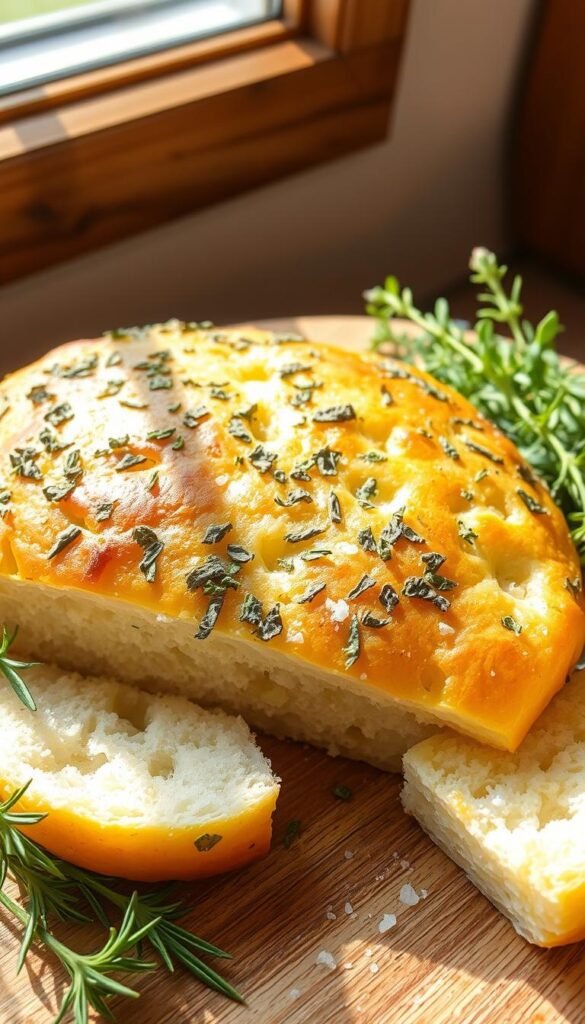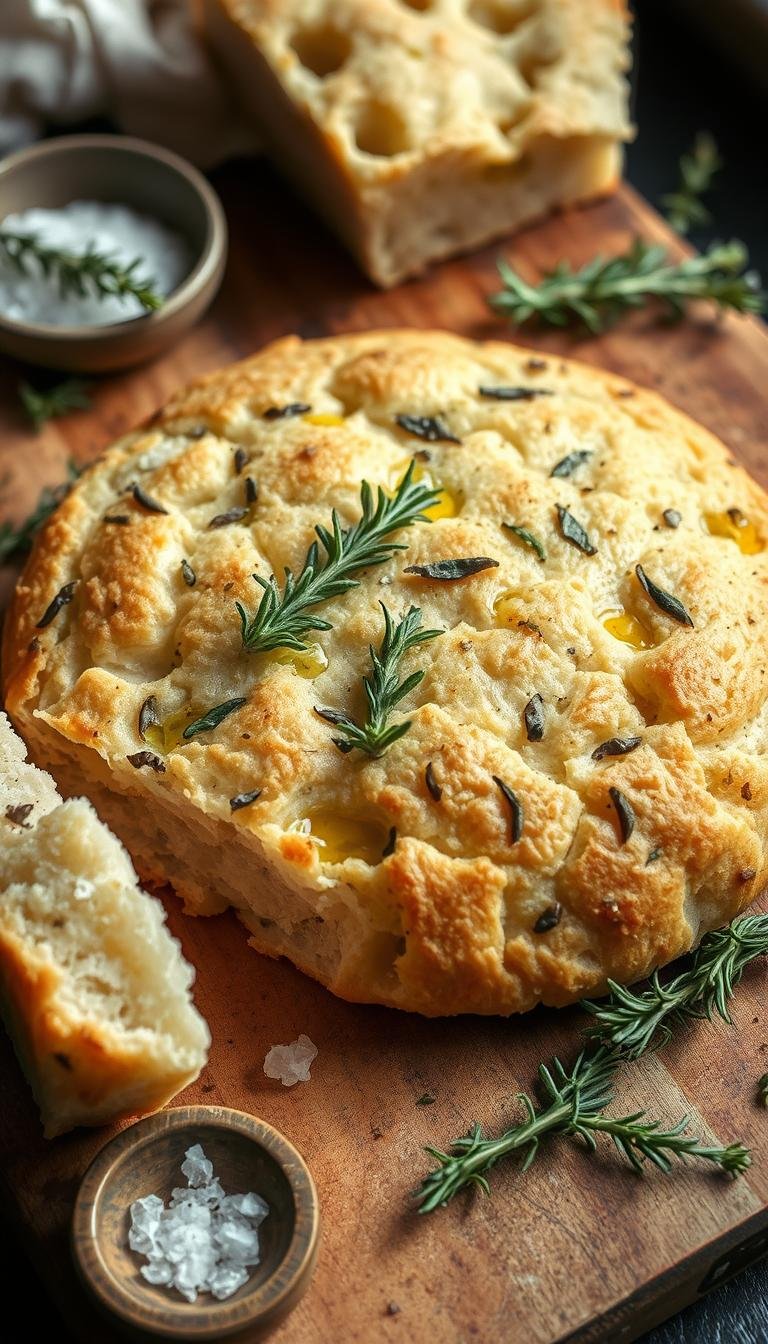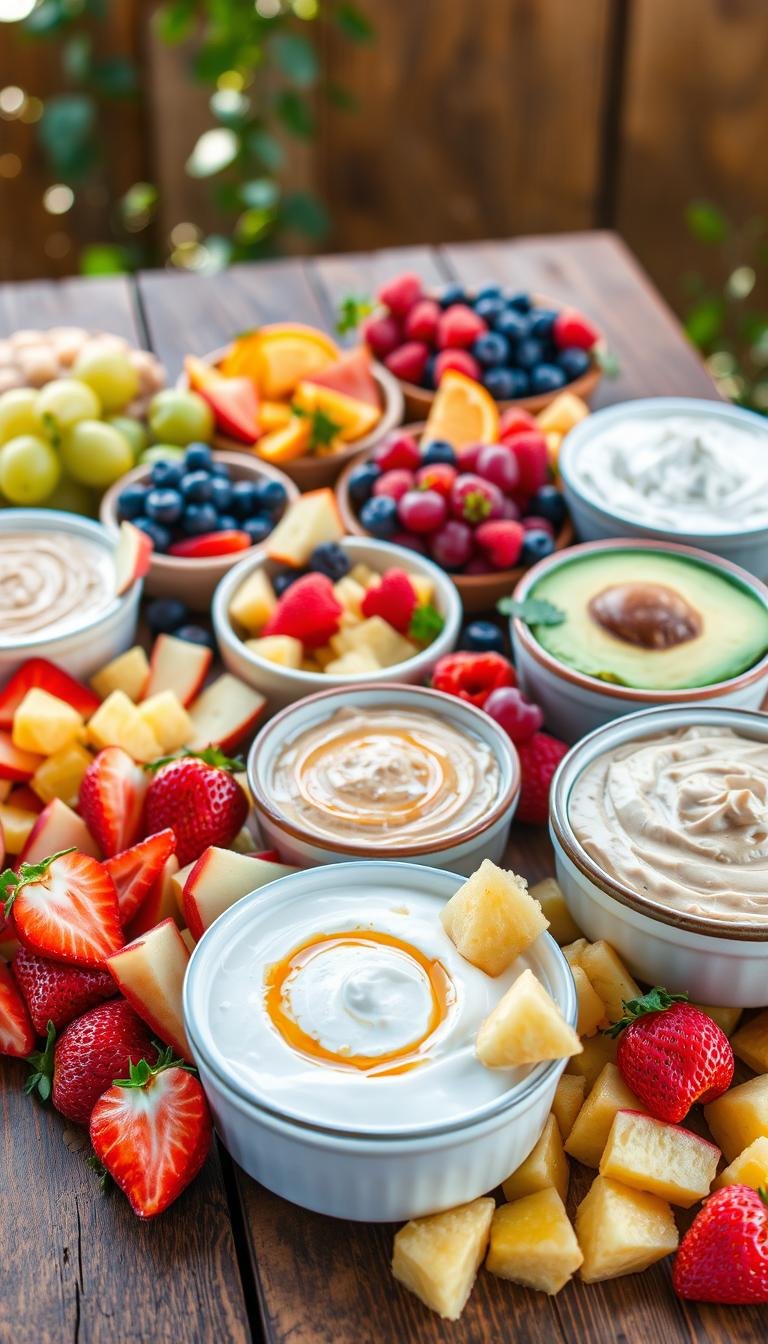3 Gluten-Free Focaccia Bread Recipes That Actually Taste Amazing
For the millions of Americans living with celiac disease or gluten intolerance, enjoying traditional Italian bread like focaccia can be a challenge. The good news is that gluten-free alternatives have come a long way, offering a chance to savor this beloved bread without the discomfort.
Imagine sinking your teeth into a soft, flavorful gluten-free focaccia, its aroma filling the air. It’s not just a dream; with the right recipes, it’s a reality. In this article, we’ll explore three exceptional celiac-friendly bread recipes that are not only safe for those with gluten intolerance but are genuinely delicious.
Key Takeaways
- Discover the secret to making tasty gluten-free recipes that everyone will love.
- Explore three unique gluten-free focaccia recipes perfect for any occasion.
- Learn how to create celiac-friendly bread that’s both healthy and flavorful.
- Understand the importance of using the right ingredients for gluten-free baking.
- Get tips on how to make your gluten-free bread rise perfectly every time.
The Gluten-Free Bread Revolution
The quest for perfect gluten-free bread has led to a revolution in baking, with focaccia being a key focus. As bakers and food enthusiasts continue to experiment with new ingredients and techniques, the landscape of gluten-free baking is rapidly evolving.
Why Most Gluten-Free Breads Fall Short
Many gluten-free breads disappoint due to their dry, crumbly, or dense texture, often resulting from the challenges of replicating gluten’s unique properties. Gluten provides elasticity and structure to traditional bread, making it difficult to achieve the same texture without it. Most gluten-free substitutes fail to fully capture the complexity of gluten, leading to an inferior eating experience. The absence of gluten often results in bread that is either too dense or too fragile.
To overcome these challenges, bakers must carefully select ingredients that can mimic the binding properties of gluten. This often involves combining different types of gluten-free flours and adding binding agents to improve texture.
What Makes Focaccia Special
Focaccia is a beloved Italian bread known for its airy texture, crisp exterior, and chewy interior, making it a challenging yet rewarding bread to recreate in gluten-free form. The dimples on its surface are not just aesthetically pleasing; they help to hold the flavorful olive oil that is a hallmark of this bread. Traditional focaccia is often seasoned with herbs, garlic, or sea salt, adding to its rich flavor profile. The combination of a crispy crust and soft interior makes focaccia a versatile bread that can be used for sandwiches, dipping in soups, or enjoyed on its own.
Recreating focaccia in gluten-free form requires a deep understanding of how to balance ingredients to achieve the desired texture and flavor. By using the right combination of gluten-free flours and techniques, it’s possible to create a gluten-free focaccia that rivals its traditional counterpart.
The Challenge of Gluten-Free Focaccia
Gluten-free baking, particularly when it comes to Italian staples like focaccia, presents a unique set of challenges. Traditional focaccia relies heavily on wheat flour, which contains gluten – a protein that provides structure and elasticity to bread. For individuals with celiac disease or gluten sensitivity, consuming traditional focaccia can have serious health implications, making the need for a reliable gluten-free alternative crucial.
The difficulty in creating gluten-free focaccia lies in replicating the texture and flavor of traditional focaccia. Gluten-free flours lack the binding properties of gluten, making it challenging to achieve the same level of rise and texture.
Why Traditional Focaccia Is Off-Limits for Gluten-Free Diets
Traditional focaccia is made with wheat flour, water, yeast, salt, and olive oil. The gluten in wheat flour is essential for creating the dough’s elasticity and rise. However, for those with gluten-related disorders, consuming gluten can cause damage to the small intestine and lead to various health issues. Therefore, finding a gluten-free alternative that matches the taste and texture of traditional focaccia is highly desirable.
Understanding Gluten
Gluten is a complex protein found in wheat, barley, and rye. It gives dough its chewy texture and helps it rise. In traditional bread making, gluten plays a crucial role in creating the structure and texture of the final product.
Common Problems with Gluten-Free Bread Recipes
Many gluten-free bread recipes struggle with issues like poor texture, inadequate rise, and lack of flavor. Some common problems include:
- Inadequate rise due to the lack of gluten
- Poor structure retention
- Difficulty achieving the signature olive oil-infused flavor
- Gummy or dense texture
To illustrate the challenges and potential solutions, let’s examine a comparison of different gluten-free flours:
| Flour Type | Rise Quality | Texture | Flavor |
|---|---|---|---|
| Almond Flour | Poor | Dense | Nutty |
| Rice Flour | Fair | Crumbly | Mild |
| Cassava Flour | Good | Soft | Neutral |

By understanding these challenges and experimenting with different ingredients and techniques, bakers can create gluten-free focaccia that rivals its traditional counterpart.
Essential Ingredients for Successful Gluten-Free Focaccia
Crafting gluten-free focaccia that rivals its traditional counterpart begins with selecting the right ingredients. The challenge lies in replicating the structure and flavor that gluten provides in traditional bread. To achieve this, bakers must carefully choose their ingredients and understand how they interact.
Flour Blends That Work Best
The foundation of great gluten-free focaccia is a well-crafted flour blend. Unlike traditional wheat flour, gluten-free flours require a combination of different starches and flours to achieve the right texture and flavor. Popular gluten-free flours include rice flour, tapioca flour, potato starch, and sorghum flour. A good blend typically combines 2-3 of these flours to balance lightness, texture, and flavor.
For instance, a blend that includes rice flour for lightness, tapioca flour for chewiness, and potato starch for moisture retention can produce excellent results. Some bakers prefer using commercial gluten-free flour blends for convenience, while others enjoy creating their own custom blends. Experimenting with different ratios can help you find the perfect blend for your gluten-free focaccia.

Key Binding Agents and Their Functions
Since gluten provides elasticity and structure in traditional bread, gluten-free bakers rely on binding agents to achieve similar results. Common binding agents include xanthan gum, psyllium husk, and flaxseed. Xanthan gum is particularly effective at improving dough elasticity and helping it hold together. Psyllium husk, on the other hand, adds fiber and helps retain moisture, while flaxseed provides omega-3 fatty acids and additional texture.
Understanding the role of each binding agent allows bakers to choose the best option for their specific recipe. For example, xanthan gum is often used in small quantities (about 1/4 teaspoon per cup of flour) to enhance dough cohesion. Combining different binding agents can also lead to better texture and structure in gluten-free focaccia.
Oils and Seasonings for Authentic Flavor
Olive oil, herbs, and seasonings play a crucial role in achieving the authentic flavor of Italian focaccia. High-quality olive oil not only adds richness but also helps to create the characteristic tender crumb. Fresh or dried herbs like rosemary, thyme, and oregano add depth and aroma, while sea salt enhances the overall flavor profile.
To get the most out of your seasonings, it’s essential to choose high-quality ingredients. For instance, using a robust, extra-virgin olive oil can make a significant difference in the flavor. Similarly, fresh herbs can add a vibrant, fresh taste that dried herbs can’t match. Experimenting with different herb and seasoning combinations can help you create a unique and delicious gluten-free focaccia.
Equipment and Techniques for Perfect Gluten-Free Focaccia
Achieving perfect gluten-free focaccia requires not only the right ingredients but also the appropriate equipment and techniques. To produce a high-quality gluten-free focaccia, it’s essential to understand the role of both.
Recommended Baking Tools
Having the right baking tools can significantly improve your gluten-free focaccia. Precision is key in gluten-free baking, where small variations can affect the final product.
- A digital scale ensures accurate measurements of ingredients, crucial for the success of gluten-free bread.
- A stand mixer or a robust hand mixer can handle the thick, sticky gluten-free dough, making the mixing process easier.
- A cast iron skillet or a baking sheet with a non-stick surface can help achieve the characteristic crust of focaccia.
- A proofing basket or a bowl with a cloth cover helps in maintaining the dough’s moisture during proofing.
- An oven thermometer ensures that your oven is at the correct temperature, vital for even baking.
Special Techniques for Gluten-Free Dough Handling
Handling gluten-free dough requires gentle care and specific techniques to overcome its sticky and delicate nature.
- Proper Hydration: Ensuring the right balance of liquid ingredients is crucial. Too little, and the dough is dry; too much, and it’s unmanageable.
- Resting the Dough: Allowing the dough to rest helps the flours absorb the liquid evenly, improving the texture.
- Creating Dimples: Gently creating dimples with your fingers, rather than stretching or pulling the dough, helps maintain the air pockets.
- Managing Temperature: Keeping the dough at the right temperature during proofing can significantly affect the rise and flavor.
By mastering these techniques and using the right equipment, you can significantly improve your gluten-free focaccia, making it a delicious and satisfying bread option.
3 Gluten-Free Focaccia Bread Recipes That Actually Taste Amazing
Now, let’s dive into the heart of our gluten-free focaccia journey with three mouth-watering recipes. These recipes have been carefully crafted to not only meet but exceed your expectations for gluten-free focaccia.
Classic Herb and Sea Salt Gluten-Free Focaccia
The classic herb and sea salt focaccia is a staple for a reason. It’s simple, yet elegant, and pairs well with a variety of dishes. To make this recipe, you’ll need:
Ingredients List
- 1 1/2 cups gluten-free flour blend
- 1/4 cup olive oil
- 2 cloves garlic, minced
- 1 tsp dried rosemary
- 1 tsp sea salt
- 1 cup warm water
Step-by-Step Preparation Method
Begin by combining the gluten-free flour blend, olive oil, garlic, rosemary, and sea salt in a mixing bowl. Gradually add the warm water, mixing until a dough forms.
Baking Instructions and Visual Cues for Doneness
Bake the focaccia at 425°F (220°C) for 15-20 minutes, or until it’s golden brown and sounds hollow when tapped.
Serving Suggestions and Flavor Pairings
This classic focaccia pairs beautifully with soups, salads, or as a side to your favorite pasta dishes. Try it with a drizzle of olive oil and a sprinkle of parmesan cheese.

Mediterranean Olive and Rosemary Gluten-Free Focaccia
The Mediterranean olive and rosemary focaccia brings a robust flavor profile, perfect for those who love a good olive bread. The ingredients include:
Ingredients List
- 1 1/2 cups gluten-free flour blend
- 1/4 cup olive oil
- 1/4 cup pitted and sliced olives
- 2 cloves garlic, minced
- 1 tsp dried rosemary
- 1 tsp salt
- 1 cup warm water
Step-by-Step Preparation Method
Combine the gluten-free flour blend, olive oil, olives, garlic, rosemary, and salt in a mixing bowl. Gradually add the warm water, mixing until a dough forms.
Baking Instructions and Visual Cues for Doneness
Bake at 425°F (220°C) for 20-25 minutes, or until the focaccia is golden brown and sounds hollow when tapped.
Serving Suggestions and Flavor Pairings
This Mediterranean focaccia is perfect as a snack on its own or paired with a hearty stew. It’s also great with a selection of cheeses and cured meats.
Garlic and Caramelized Onion Gluten-Free Focaccia
For a sweeter and richer focaccia, try the garlic and caramelized onion recipe. This one’s a game-changer for anyone who loves caramelized onions.
Ingredients List
- 1 1/2 cups gluten-free flour blend
- 1/4 cup olive oil
- 1 large onion, caramelized
- 3 cloves garlic, minced
- 1 tsp salt
- 1 cup warm water
Step-by-Step Preparation Method
Combine the gluten-free flour blend, olive oil, caramelized onion, garlic, and salt in a mixing bowl. Gradually add the warm water, mixing until a dough forms.
Baking Instructions and Visual Cues for Doneness
Bake at 425°F (220°C) for 20-25 minutes, or until the focaccia is golden brown and sounds hollow when tapped.
Serving Suggestions and Flavor Pairings
This garlic and caramelized onion focaccia is amazing on its own or as a side to your favorite dishes. It’s particularly good with roasted meats or as a base for sandwiches.
Troubleshooting Common Issues
Mastering gluten-free focaccia requires more than just a good recipe. Even with careful preparation, issues can arise that affect the final product’s quality. Understanding how to troubleshoot these problems is crucial for achieving a delicious, authentic-tasting gluten-free focaccia.
Dealing with Dry or Crumbly Texture
A dry or crumbly texture is often the result of inadequate hydration or insufficient fat content in the dough. To fix dry gluten-free bread, try increasing the liquid content in your recipe or adding more oil/butter. Baking time and temperature also play a significant role; a lower temperature for a longer period can help retain moisture.
For already-baked bread, try brushing it with olive oil or a flavored oil to add moisture. For future batches, consider using a flour blend with higher protein content or adding xanthan gum to improve texture.
Fixing Dough That Won’t Rise
When your dough doesn’t rise as expected, it can be disappointing. To troubleshoot bread not rising, first check your yeast’s activity. Ensure it’s fresh and that the liquid used is not too hot or cold. Temperature is crucial; most yeast thrives between 75°F to 80°F (24°C to 27°C).
Another factor could be the protein structure in your gluten-free flours. Some blends may lack sufficient protein for a good rise. Consider adjusting your flour blend or adding vital wheat gluten (if you’re not strictly gluten-free) or other rising aids like psyllium husk.
Preventing Gummy Centers
Gummy centers are a common issue in gluten-free breads, including focaccia. This problem usually stems from underbaking or excessive moisture. To prevent gummy gluten-free texture, ensure your focaccia is baked thoroughly. Check for doneness by tapping the bottom; it should sound hollow.
Using the right baking vessel can also help. A preheated stone or baking steel can improve heat distribution, reducing the likelihood of a gummy center. Additionally, letting the bread cool completely on a wire rack before slicing can help retain its texture.
| Issue | Cause | Solution |
|---|---|---|
| Dry/Crumbly Texture | Insufficient hydration or fat | Increase liquid or fat content; adjust baking time/temperature |
| Dough Won’t Rise | Inactive yeast or poor protein structure | Check yeast freshness; adjust flour blend or add rising aids |
| Gummy Centers | Underbaking or excessive moisture | Ensure thorough baking; use preheated baking stone/steel; cool completely before slicing |

Storage and Reheating Tips
To enjoy your gluten-free focaccia over multiple days, it’s essential to understand how to store and reheat it correctly. Proper storage and reheating techniques can significantly extend the freshness and quality of your gluten-free focaccia.
Best Practices for Keeping Focaccia Fresh
To preserve focaccia freshness, it’s crucial to cool the bread completely before storing it. This prevents moisture buildup, which can lead to sogginess or mold growth. Once cooled, wrap the focaccia tightly in plastic wrap or aluminum foil. For longer storage, place the wrapped focaccia in a freezer-safe bag and store it in the freezer.
Here are some storage timelines to keep in mind:
| Storage Method | Duration |
|---|---|
| Room Temperature | Up to 2 days |
| Refrigerator | Up to 5 days |
| Freezer | Up to 2 months |
When storing, it’s also important to keep the focaccia away from strong-smelling foods, as it can absorb odors easily.
How to Reheat Without Drying Out
Reheating gluten-free focaccia requires care to prevent it from drying out. The best method is to reheat gluten-free focaccia in the oven. Preheat your oven to 350°F (175°C), wrap the focaccia in foil, and heat for 5-10 minutes. This method helps retain moisture.
Alternatively, you can use a toaster or toaster oven for smaller portions. For a quick reheat, the microwave can be used, but be cautious as it can make the focaccia rubbery if overheated. Wrap it in a damp paper towel to help retain moisture.
Perfect Pairings for Your Gluten-Free Focaccia
Take your gluten-free focaccia to the next level with these delicious pairing suggestions. Gluten-free focaccia can be the star of a complete meal when paired with the right dishes. Here, we’ll explore how to create a cohesive and satisfying dining experience.
Soups and Stews That Complement These Recipes
Pairing your gluten-free focaccia with the right soup or stew can elevate the entire meal. For instance, the Classic Herb and Sea Salt Gluten-Free Focaccia pairs beautifully with a warm, comforting bowl of Italian Minestrone. The herbs in the focaccia complement the vegetable flavors in the soup, creating a harmonious balance.
The Mediterranean Olive and Rosemary Gluten-Free Focaccia is a perfect match for a rich and savory Lentil Stew. The olives and rosemary in the focaccia enhance the Mediterranean flavors of the stew, making for a satisfying and filling meal.
Creating an Italian-Inspired Gluten-Free Meal
To create an Italian-inspired gluten-free meal, start with your gluten-free focaccia as the centerpiece. For an antipasto platter, pair the Garlic and Caramelized Onion Gluten-Free Focaccia with cured meats like prosciutto and salami, along with a selection of marinated vegetables and cheeses.
For the main course, consider a grilled chicken or fish dish seasoned with Italian herbs, served alongside a simple green salad dressed with olive oil and vinegar. Finish the meal with a light dessert like Panna Cotta or fresh fruit, ensuring that the entire meal remains gluten-free.
Conclusion
Creating delicious gluten-free focaccia is a journey that requires the right ingredients, techniques, and a bit of practice. With the insights gained from this article, you’re now equipped to produce best gluten-free focaccia that rivals traditional Italian bread. The recipes shared here aren’t just alternatives; they’re celiac-friendly Italian bread options that stand on their own merit, crafted with the finest ingredients and techniques from artisan gluten-free baking.
By understanding the challenges of gluten-free baking and applying the tips and recipes provided, you can enjoy authentic Italian flavors without compromise. Whether you’re new to gluten-free baking or looking to refine your skills, the key is experimentation and patience. So, don’t be afraid to try the recipes, adjust them to your taste, and explore new variations.
With every successful loaf, you’ll become more confident in your ability to create delicious, gluten-free focaccia that impresses family and friends alike. So, get baking and enjoy the rich flavors and textures that make Italian bread a staple in any cuisine.






